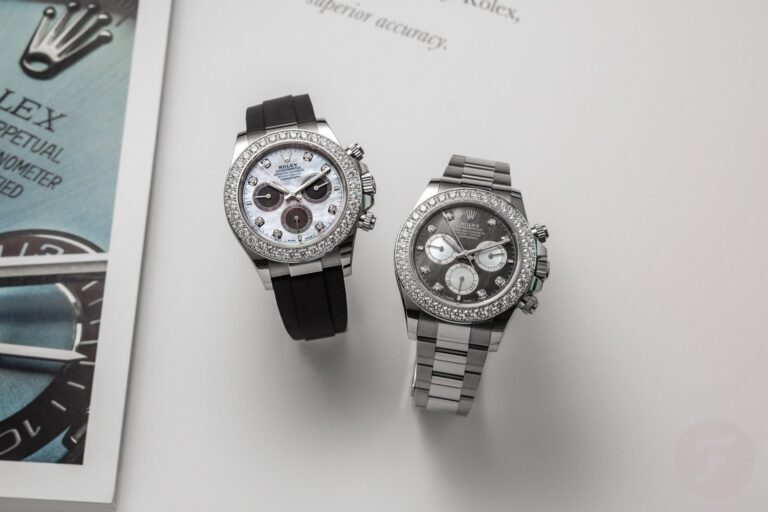This Monday morning is all about making important “bling” decisions. We recently had the chance to get our hands on two diamond-set versions of the white gold Rolex Cosmograph Daytona: the reference 126589RBR with a “Panda” mother-of-pearl dial and Oysterflex bracelet, and the reference 126579RBR with a “Reverse Panda” MOP dial and white gold Oyster bracelet. While both models have enough appeal to spark some heated debate, in the end it’s the bracelet that decides whether you’re “Team Panda” or “Team Reverse Panda.”
There may come a time when you feel the need to own a watch with diamonds. And not just any watch, you want one of the most famous chronographs in the world with diamonds. But colored gold might be too flashy, so white gold is your option. Rolex offers you two choices. The reference 126589RBR is a 40mm white gold Daytona with a natural colored mother-of-pearl dial with black subdials and a black Oysterflex bracelet (Rolex doesn’t want anyone to call it a strap because it has a special steel insert, but more on this later) priced at 66,450 euros. And the reference 126579RBR has a black MOP dial and a sporty and familiar three-link Oyster bracelet in the same white gold material as the case, priced at 75,700 euros.
Choose from two diamond-set versions of the Rolex Cosmograph Daytona
Let’s not even begin to debate whether it’s appropriate to introduce the instrument chronograph, which has been legendary since its launch in 1963. This chronograph features a delicate mother-of-pearl dial with diamond indexes and diamonds on the bezel, replacing the instrument tachymeter scale. Since Rolex invented the Daytona, the brand has been free to do what it likes with it. This is a fact, and it’s not up for debate one way or another. As such, there are a ton of non-purist Daytona models out there that make some people shudder with disgust, but that resonate with those who don’t mind a little extra visual spectacle, like a MOP dial or the sparkling sparkle of diamonds.
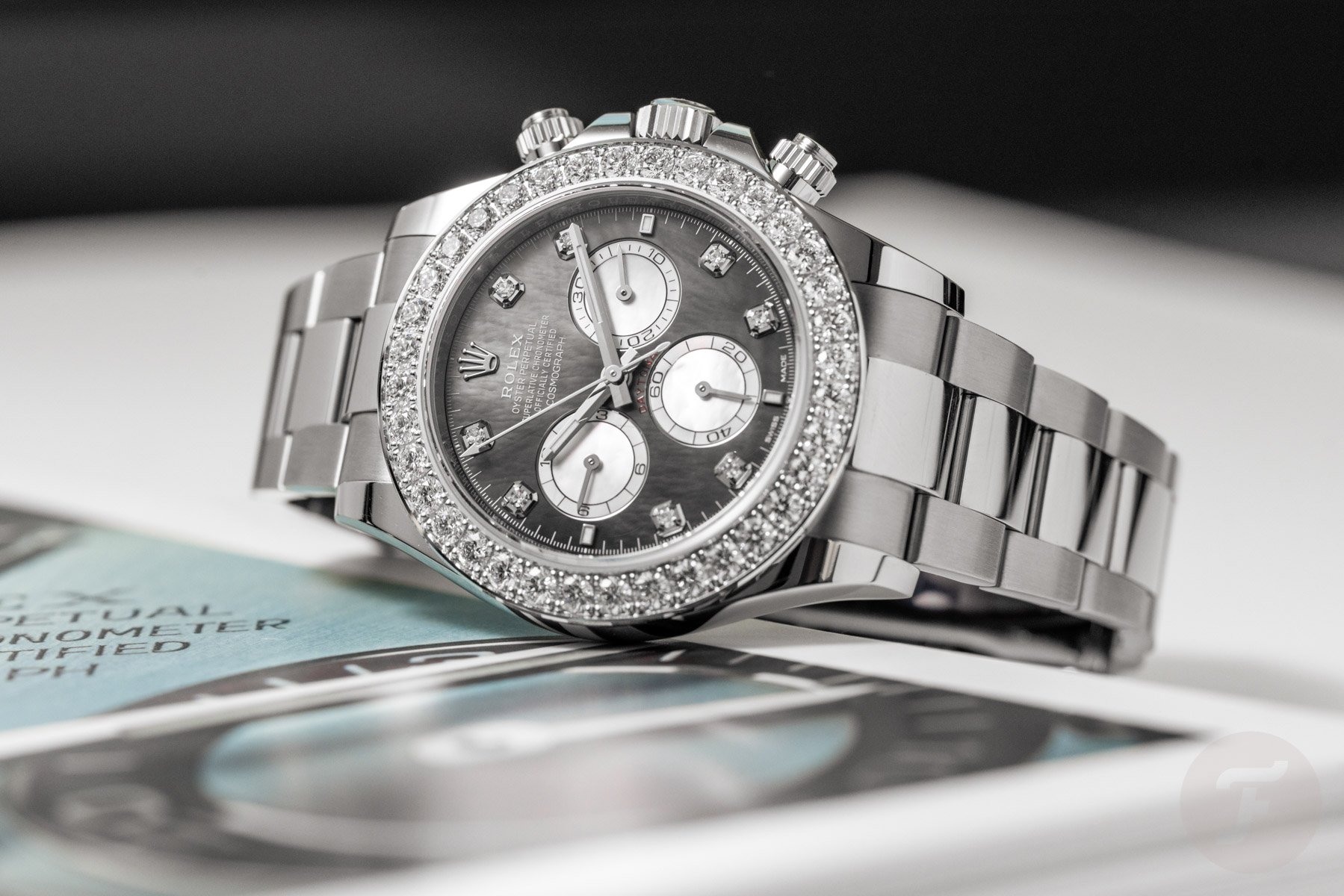
New this year are the “Iced” references 126589RBR and 126579RBR. Let’s start with the similarities. Both Daytona models have a case size of 40 x 11.9 mm with a lug-to-lug length of 47 mm. Inside the precious metal case, water resistant to 100 meters, Rolex houses the chronometer-certified automatic chronograph caliber 4131. This in-house movement is the result of evolution and innovation, which allows for a simplified construction and makes room for a large mainspring, resulting in a modern power reserve of 72 hours. The chronograph’s precise vertical clutch mechanism is traditional and ensures long hours of operation. Other technical features include the Chronergy escapement and Parachrom hairspring. The Oyster case of both models also features screw-down pushers and a Triplock winding crown with the brand’s patented waterproofing system.
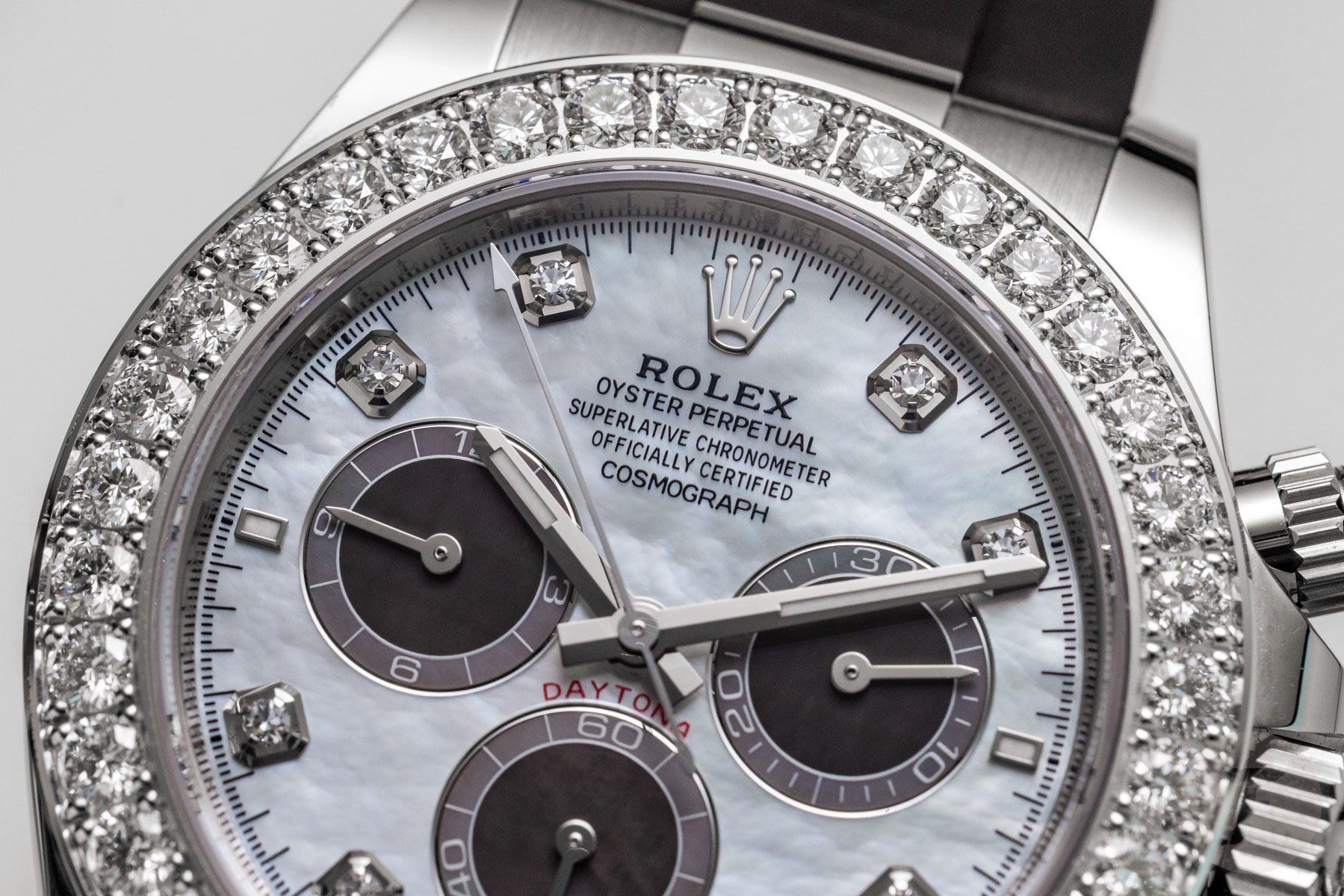
Tachymeter scale, go away!
The dials of both watches are finished in delicate mother-of-pearl, but the dial layout is robust. The counters at 3, 6, and 9 o’clock are instantly recognizable as “Daytona.” The black counters, set against a white background, also feature the inscription “Paul Newman,” the actor who made the Panda Daytona famous. But if you’re buying the panda dial ref. 126589RBR, you’re not trying to emulate a Hollywood icon. Aside from the dial’s less-than-subtle hue, there are too many diamonds that distract from the famous actor/style icon/social entrepreneur Paul Newman vibe.
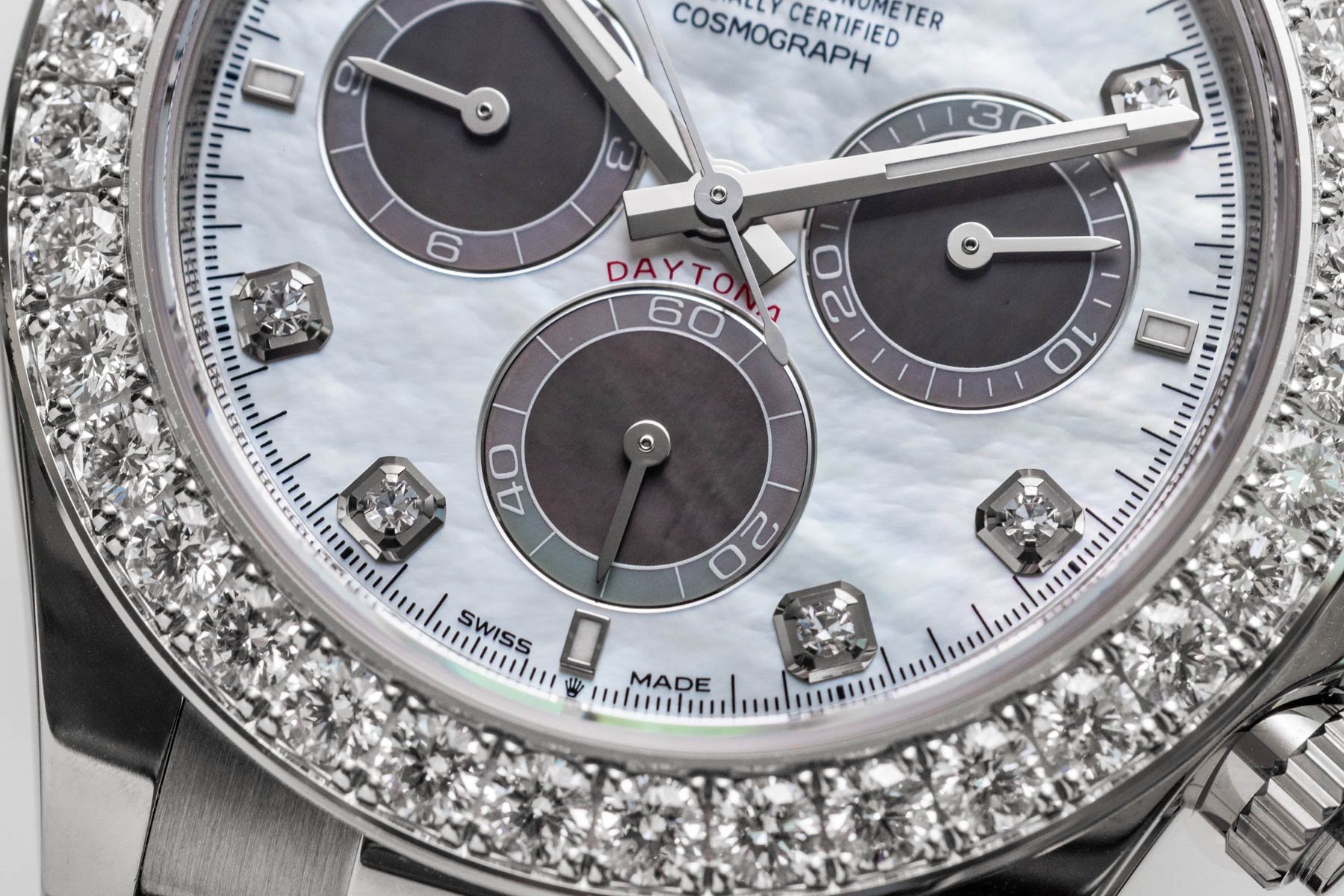
The MOP dial is a luxurious upgrade over the functional dial, as are the eight diamonds that act as hour markers. Touches of Chromalight can be found on the other three indexes, and at 12 o’clock, the Rolex crown acts as an hour marker. Looks seem to take precedence over functionality in these two new Daytona versions. The functional Cerachrom bezel with tachymeter scale has been replaced with a bezel adorned with 36 brilliant-cut diamonds. But it’s not the end of the world. Don’t tell me you’re actually using a functional tachymeter scale. We won’t believe you!
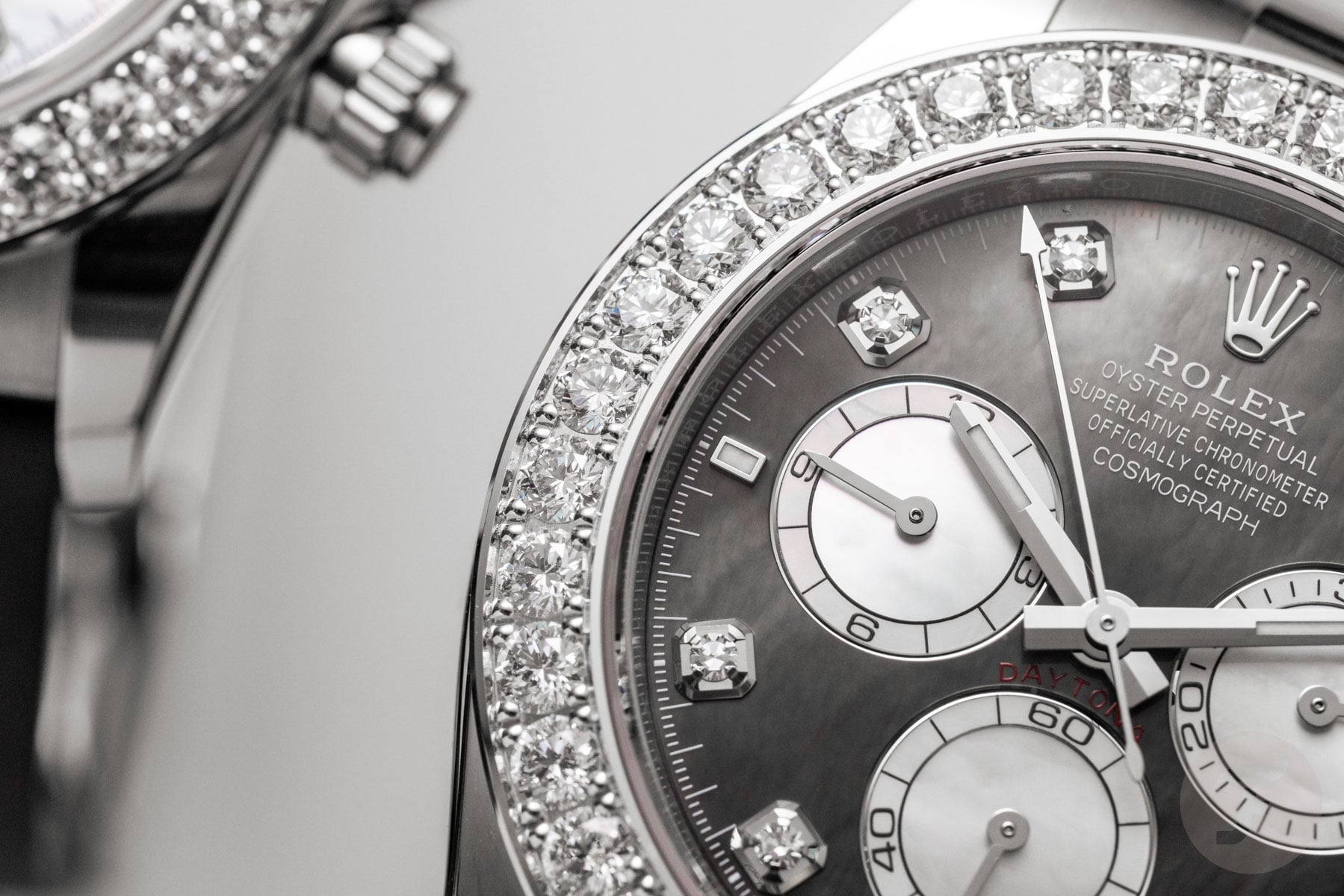
Bracelets and bracelets
The dials are polar opposites, like choosing a panda. Same goes for the bracelets. And I think the difference between the two white gold Rolex Cosmograph Daytona models is what holds this “icy” chronograph on your wrist. Of course, you can ask an authorized dealer to change the bracelet for you. But since we’re dealing with two official references, and Crown doesn’t like to tinker with its watches, let’s assume you choose one and can’t change anything.
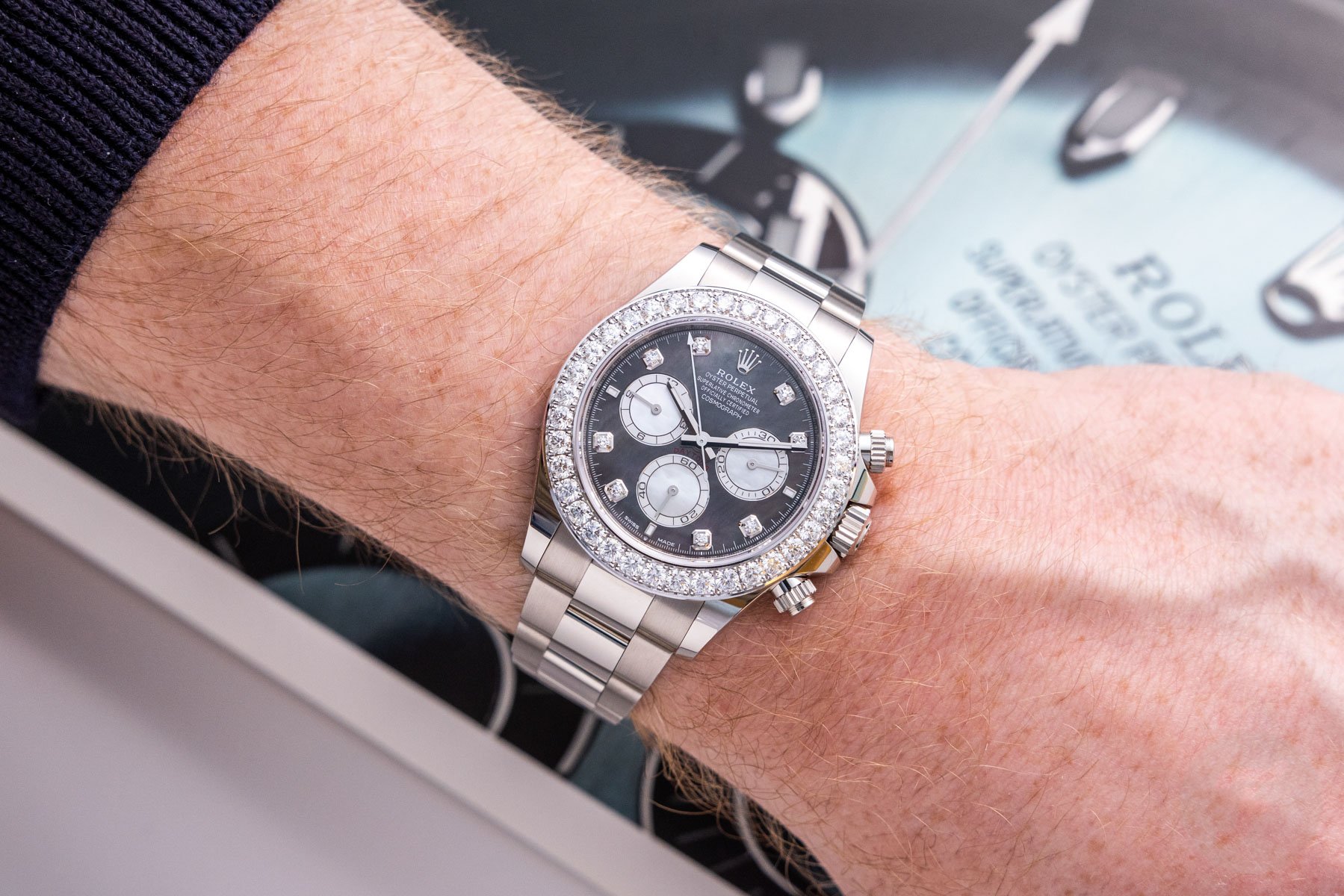
In that case, the adventurous choice is the Oysterflex, the traditional choice is the Oyster bracelet. Rolex wants you to call the rubber Oysterflex a bracelet, because it has two flexible curved metal blades in a black elastomer. The bracelet is cushioned on the inside and has an Oysterlock safety clasp that prevents accidental opening. In addition, the length of the bracelet can be adjusted with the Glidelock extension system. Knowing all this, you can see why Rolex doesn’t want you to recognize the Oysterflex as a strap, or even to recognize it as a strap.
The Oyster bracelet needs no introduction. Since it was first introduced in the late 1930s, it has become the most famous sporty and sturdy bracelet of all time. Made from white gold, it has all that and more, plus it’s luxurious. So, which bracelet will you choose? I’m a full supporter of the Oysterflex. I love the contrast between the white gold case and the chalky, natural shine of the MOP dial. And if you’re going to “overdo it” with the Daytona, you might as well go all out.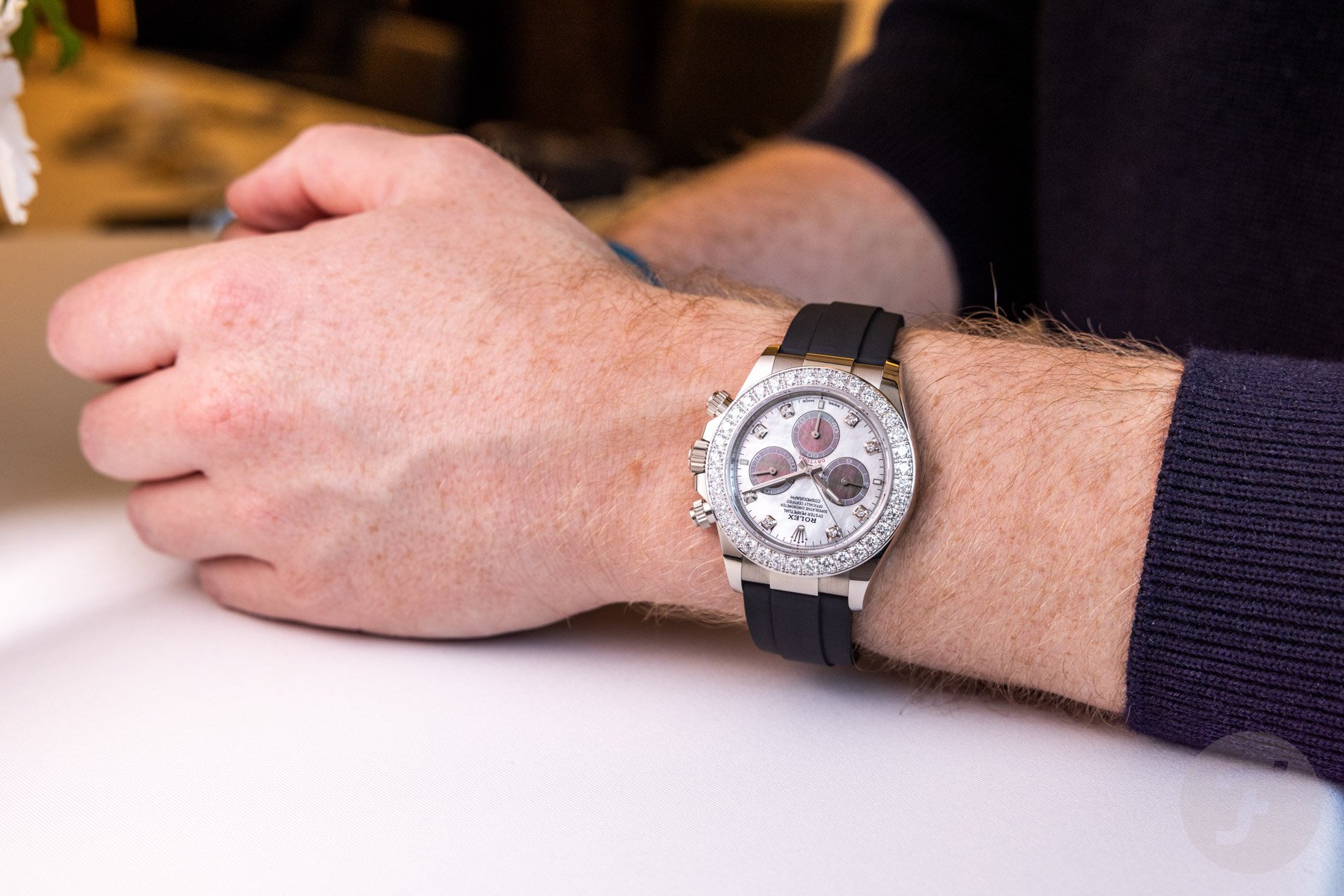
But let us know in the comments below which of these two diamond-rich Daytona models is your favorite. Diamonds or no diamonds, we hope you stay cool on this mid-August Monday.
